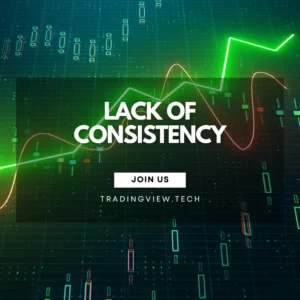Long-term investing and active trading are often seen as two opposing approaches to the financial markets. Investors traditionally focus on steady growth over years or even decades, relying on fundamental analysis and economic trends. Traders, on the other hand, seek short-term profits by capitalizing on market fluctuations, technical indicators, and momentum. While these strategies appear distinct, they are not mutually exclusive.
For investors aiming to maximize returns, integrating active trading into a long-term portfolio can provide several advantages. Trading can help enhance gains during market upswings, hedge against downturns, and take advantage of short-term opportunities that a purely passive investor might miss. However, combining these two approaches requires careful planning, risk management, and a clear understanding of how they interact within a broader financial strategy.
In this article, we will explore the key differences between investing and trading, examine strategies for effectively incorporating trading into a long-term investment plan, and highlight essential risk management techniques to avoid common pitfalls. By the end, you’ll have a better understanding of how to balance stability and growth in your portfolio.
Key Differences Between Investing and Trading
To successfully combine investing with active trading, it’s crucial to understand how these approaches differ in terms of strategy, risk, and execution. Below, we break down the key distinctions.
1. Investment Horizon and Time Commitment
- Investing is a long-term strategy, typically spanning years or decades. Investors buy assets with the expectation of gradual appreciation, focusing on fundamental value.
- Trading is short-term and requires active management. Positions may last for days, weeks, or even minutes, depending on the chosen style (day trading, swing trading, etc.).
A long-term investor can afford to ignore daily price movements, while a trader must constantly monitor the market and react quickly to opportunities.
2. Decision-Making Approach
- Investors prioritize fundamental analysis, assessing a company’s financial health, industry trends, and macroeconomic factors. Metrics such as earnings growth, P/E ratio, and debt levels play a central role.
- Traders rely heavily on technical analysis, using price charts, patterns, and indicators like moving averages, RSI, and Fibonacci retracements to make short-term predictions.
For long-term investors, short-term price fluctuations are often irrelevant, whereas for traders, they form the basis of decision-making.
3. Risk and Return Expectations
- Investing involves lower risk per trade, as it is based on long-term market trends and economic growth. Diversification and compounding returns are key to success.
- Trading carries higher risk due to frequent market exposure and short-term volatility. While it offers higher potential rewards, it also increases the chances of losses.
An investor might accept moderate market downturns as part of a long-term strategy, whereas a trader must have strict stop-loss rules to limit potential losses.
4. Transaction Costs and Liquidity
- Investors make fewer trades, reducing transaction costs such as commissions and spreads. Holding investments for longer periods also minimizes tax implications in some jurisdictions.
- Traders face higher transaction costs due to frequent buying and selling. They need liquid assets to enter and exit positions quickly without significant price slippage.
By understanding these differences, investors can make informed decisions about how much active trading to incorporate into their portfolio.
Strategies for Integrating Trading into a Long-Term Portfolio
Blending active trading with long-term investing requires a structured approach that balances stability and short-term profit opportunities. Investors who successfully combine both strategies typically follow a disciplined plan that aligns with their financial goals and risk tolerance.
1. Core-Satellite Strategy
The core-satellite approach divides a portfolio into two segments: a stable, long-term investment core and a more actively managed satellite portion.
- The core consists of diversified, fundamentally strong assets such as index funds, blue-chip stocks, or bonds, designed for steady growth over time.
- The satellite portion includes more volatile assets, such as individual stocks, options, or sector-specific ETFs, allowing for short-term trading opportunities.
This method ensures that a significant portion of the portfolio remains stable while still enabling active participation in short-term market movements.
2. Trend Following and Momentum Trading
Investors can enhance their long-term strategy by incorporating trend-following techniques. Instead of holding assets indefinitely, they adjust positions based on market trends.
- Momentum trading involves buying assets that have shown strong upward trends and selling those that weaken.
- Moving averages, relative strength indicators, and breakout patterns help identify when to enter or exit trades.
By following trends within their portfolio, investors can optimize entry and exit points rather than relying solely on passive holding.
3. Hedging with Derivatives
Options and futures contracts allow investors to hedge against market downturns while maintaining long-term positions.
- Protective puts safeguard against losses by giving the right to sell an asset at a predetermined price.
- Covered calls generate additional income by selling options on assets already held in the portfolio.
Using derivatives strategically can reduce downside risk and improve overall portfolio resilience.
4. Sector Rotation and Tactical Allocation
Market conditions change, and different sectors outperform at different times. Tactical allocation involves adjusting holdings based on economic cycles.
- Defensive stocks (utilities, healthcare) perform well during downturns.
- Growth sectors (technology, consumer discretionary) thrive in bullish markets.
By shifting capital into high-performing sectors while maintaining a core of stable investments, investors can enhance returns without excessive risk.
5. Liquidity Management and Position Sizing
Maintaining liquidity is crucial for investors incorporating trading into their portfolios.
- Setting aside cash reserves allows for quick entry into high-potential trades.
- Proper position sizing ensures that short-term trades do not overshadow long-term stability.
A well-balanced approach prevents overexposure to volatility while capitalizing on market movements.
Risk Management and Common Pitfalls
Integrating trading into a long-term investment strategy can enhance returns, but it also introduces additional risks. Without a disciplined risk management approach, investors may face unnecessary losses and increased portfolio instability.
1. Overtrading and Emotional Decisions
One of the biggest pitfalls investors face is excessive trading.
- Frequent buying and selling increase transaction costs and tax liabilities.
- Emotional reactions to short-term price fluctuations can lead to impulsive decisions and significant losses.
A clear set of trading rules, including predefined entry and exit points, helps maintain discipline and avoid emotional biases.
2. Misalignment with Financial Goals
Short-term trading can divert attention from long-term objectives.
- Constant market monitoring can lead investors to abandon long-term strategies in pursuit of short-term gains.
- Poor risk assessment may result in an unbalanced portfolio that lacks stability.
Aligning trading activities with broader financial goals ensures that short-term tactics do not compromise long-term success.
3. Poor Risk-to-Reward Management
Effective risk management is essential when integrating trading with investing.
- Setting stop-loss and take-profit levels prevents excessive losses.
- Using a risk-to-reward ratio of at least 1:2 ensures that potential gains outweigh possible losses.
A structured risk management plan protects against market volatility and prevents capital erosion.
4. Ignoring Market Conditions and Economic Indicators
Market conditions dictate whether trading strategies will be effective.
- Ignoring economic indicators such as interest rates, inflation, and employment data can lead to poor trade timing.
- Entering high-risk trades during periods of uncertainty increases exposure to potential losses.
A combination of technical and fundamental analysis improves trade accuracy and decision-making.
5. Lack of Diversification and Overconcentration
Relying too heavily on a few high-risk assets increases vulnerability to market fluctuations.
- Concentrated positions in volatile stocks or sectors can lead to extreme portfolio swings.
- Diversifying across asset classes, industries, and geographic regions reduces risk.
Maintaining a balanced allocation between long-term investments and short-term trading ensures stability while optimizing profit potential.



